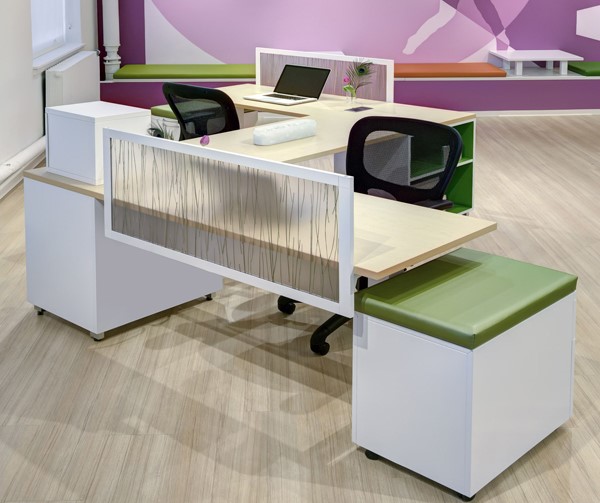How to Create the Ideal Hot Desking Space for Your Employees
How to Create the Ideal Hot Desking Space for Your Employees
The traditional workforce is becoming a thing of the past, and in its place employers are hiring a mix of full-time, part-time, freelance and mobile employees. With the sheer number of staff members increasing, it’s become impractical to have office desks permanently assigned to each and every employee.
Enter…hot desking.
“Hot desking” is a space-smart solution that allows employers to accommodate today’s modern workforce. In this model, desks are assigned to employees on an as-needed or rotating system, with the number of desks based on how many employees are in the office at any given moment. This system has many strong points and also has weaknesses that employers should be careful to address.
Let’s explore.
Pros
Flexibility: The modern workplace is built on flexibility, from the hours worked to the physical space your staff occupies. Hot desking harnesses this flexibility for a truly adaptable workplace. You can customize the way your office is arranged and break down the barriers of classically department-focused companies. By temporarily placing staff members around others who may not share their job description, you can encourage the flow of ideas and open feedback for a more innovative workplace and a stronger sense of community.
Reduced cost: Cost is a big factor when considering major changes to your company’s operations, and hot desking is a great way to cut down on costs. Rather than purchasing a desk, computer, telephone and other auxiliary office equipment for each
employee, you can limit your purchases to a select few that can be used as-needed. This saves both physical space in your office and the costs associated with each individual employee.
Cons
Psychological health impact. Traditionally, employees have had a designated space in the office where they can display family photos and express their identity with personal organization and styling. Hot desking limits this possibility, which could negatively impact job satisfaction, their sense of commitment to the workplace, and their personal engagement and ability to identify with your company. In fact, hot desking may contribute to a sense of loss, isolation and marginalization, which can have serious effects on your staff’s sense of well-being and comfort.
Physical health impact. This office practice can also affect the health of your workforce. With dozens of employees sharing the same office equipment, you may encounter messy work stations and increased illnesses from the spread of germs. Additionally, some employees may have specific needs when it comes to the physical comfort of their desk, and if a hot desk doesn’t have the right lumbar support, wrist rest
or screen resolution, you could experience additional physiological effects as well.
Practical solutions
Many employers make the mistake of simplifying hot desks to a numbers game: they take a head count and simply reduce the number of desks in the office. This arrangement can result in the harmful side effects mentioned above, but there’s actually a more intuitive way to implement this system.
With hot desking, you have the opportunity to organize your office around the unique needs of your staff. For employees who only need a few moments to check their email or make a phone call, you strategically place powered tablet chairs throughout the office, offering both private and group settings. If your staff needs a location to hold impromptu meetings or brainstorming sessions, co-op desks can offer the space and comfort for their needs.
For more permanent arrangements, you can use an adaptable hot desk area with a little bit of everything. Self-powered chairs will allow your employees to adjust seating to their personal comfort, while a mixture of sit-or-stand work stations, rolling benches and lounge seating provides flexibility for meetings, private work and fluid collaboration. You can also introduce height-adjustable desks to suit the physical needs of employees who may prefer to stand while they work, or may have other physical needs best suited by an adjustable height desk.
Strategy
Technology. Technology is a necessary partner in the implementation of any hot desk system. With “follow me” phone systems, cloud computing, personalized desktops, and robust network access and security, you can enable your employees to work from anywhere without sacrificing their personal comforts.
As you implement your system, consider both the communications software you might need as well as the physical hardware that will make this approach possible.
Policies. You should also create a set of policies to allow hot desking to work for your company. Establishing structure with clear-desk policies, non-exclusive work areas and good hygiene practices can keep your system running smoothly.
Hot desking is an innovative new solution to commonly faced problems in the evolving workforce. If you build this system around the needs of your company and its employees, you can avoid some of the complications faced by others and ensure that your office is a healthy, thriving environment.


